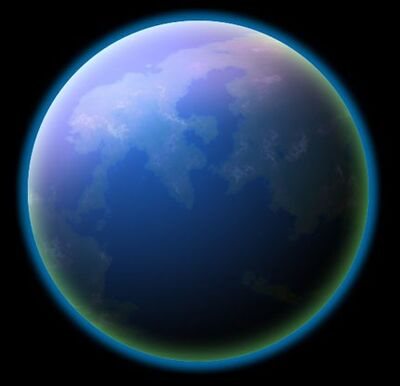No edit summary |
No edit summary |
||
| (6 intermediate revisions by the same user not shown) | |||
| Line 1: | Line 1: | ||
| − | [[File:Planet_highlight.jpg|thumb|400px]]This article is about the celestial body. For a list of planets, see [[:Category: Planets]]. |
+ | [[File:Planet_highlight.jpg|thumb|400px]]This article is about the celestial body. For a list of planets, see [[:Category: Planets]]. If you're some kind of sicko who wants to learn how to destroy a planet, see [[Destruction of Planets]]. |
| ⚫ | Planets are large celestial bodies that, with the exception of a variety called [[gameworld]]s, each orbit a [[Star|star]] or stellar remnant known as [[sun]] and are sometimes orbited by one or more natural satellites known as [[moon]]s. They are usually rounded into a spherical shape by their own gravity but on rare occasions can be shaped like a cube or other form. |
||
| ⚫ | Planets are large celestial bodies that, with the decidedly arbitrary exception of a variety called [[gameworld]]s, each orbit a [[Star|star]] or stellar remnant known as a [[sun]] and are sometimes orbited by one or more natural [[Satellite|satellites]] known as [[moon]]s. They are usually rounded into a spherical shape by their own [[gravity]] but on rare occasions can be shaped like a cube or other form. |
||
| − | The prospect of destroying a planet was once unthinkable to most beings, aside from [[Galactus]], who devoured them. However, technological developments have made it childs' play. Massive [[Space Station|space stations]] known as the [[Death Star]] and [[Death Star II]] were among the first superweapons developed for this purpose, although it was claimed that the earlier and somewhat smaller [[satellite]] [[Trigon One]] could do it as well. Elsewhere, similar technology evolved to the point where it could be spread out collectively amongst the ships of a Vogon Constructor Fleet, and planets could be routinely demolished for development purposes. A planet in the Seventh Dimension was reportedly used as a ball in a game of intergalactic bar billiards and potted into a black hole. Tragically, it only scored thirty points. |
||
| + | Planets may or may not be equipped with [[Atmosphere|atmospheres]] to simplify the [[evolution]] of life. Many are inhabited by living organisms ranging from mindless bacteria to complex sapient beings, but those that aren't are usually colonized and exploited at some point by said sapient beings. |
||
| ⚫ | |||
| + | |||
| + | Individual planets are sometimes referred to with the word "planet" as a prefix, i.e. "planet [[Miblok]]" instead of just "Miblok". This is of course grammatically unnecessary but helps to differentiate them from [[Asteroid|asteroids]], [[Comet|comets]], moons, or whatever else someone may be referring to, especially seeing as there are too many planet names for anyone to keep track of. There are a few exceptions such as [[Planet X]] which clearly have the word "planet" in the name, and that saves a lot of bother and complication all around. |
||
| + | |||
| ⚫ | The technology of building planets is more complex still and was developed by the [[Magrathean]]s of [[Magrathea]] in response to dissatisfaction from some very rich people with the worlds they had settled on. It involves sucking matter through white holes in space and assembling it within a massive "factory floor" space. |
||
| + | [[Category:Celestial Phenomena]] |
||
Latest revision as of 22:21, 9 September 2013

This article is about the celestial body. For a list of planets, see Category: Planets. If you're some kind of sicko who wants to learn how to destroy a planet, see Destruction of Planets.
Planets are large celestial bodies that, with the decidedly arbitrary exception of a variety called gameworlds, each orbit a star or stellar remnant known as a sun and are sometimes orbited by one or more natural satellites known as moons. They are usually rounded into a spherical shape by their own gravity but on rare occasions can be shaped like a cube or other form.
Planets may or may not be equipped with atmospheres to simplify the evolution of life. Many are inhabited by living organisms ranging from mindless bacteria to complex sapient beings, but those that aren't are usually colonized and exploited at some point by said sapient beings.
Individual planets are sometimes referred to with the word "planet" as a prefix, i.e. "planet Miblok" instead of just "Miblok". This is of course grammatically unnecessary but helps to differentiate them from asteroids, comets, moons, or whatever else someone may be referring to, especially seeing as there are too many planet names for anyone to keep track of. There are a few exceptions such as Planet X which clearly have the word "planet" in the name, and that saves a lot of bother and complication all around.
The technology of building planets is more complex still and was developed by the Magratheans of Magrathea in response to dissatisfaction from some very rich people with the worlds they had settled on. It involves sucking matter through white holes in space and assembling it within a massive "factory floor" space.